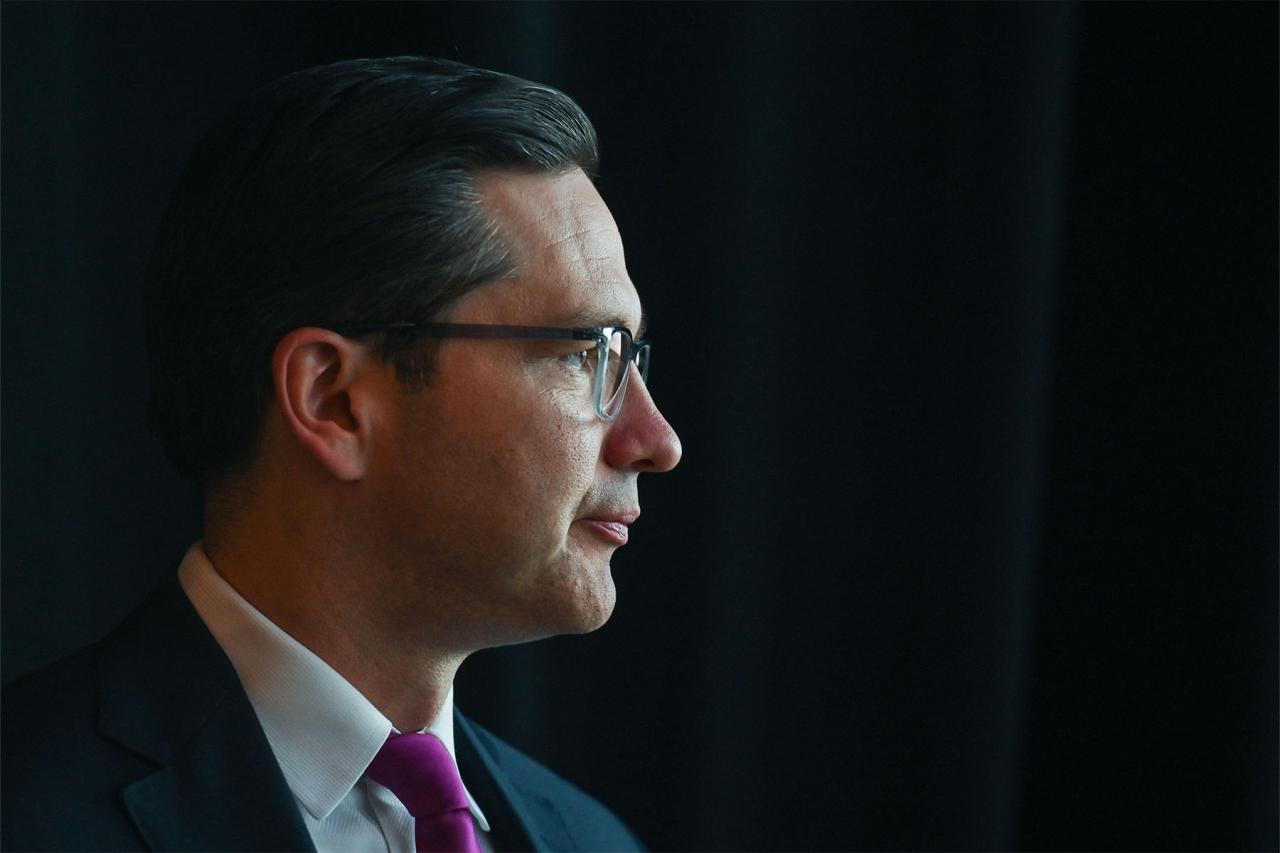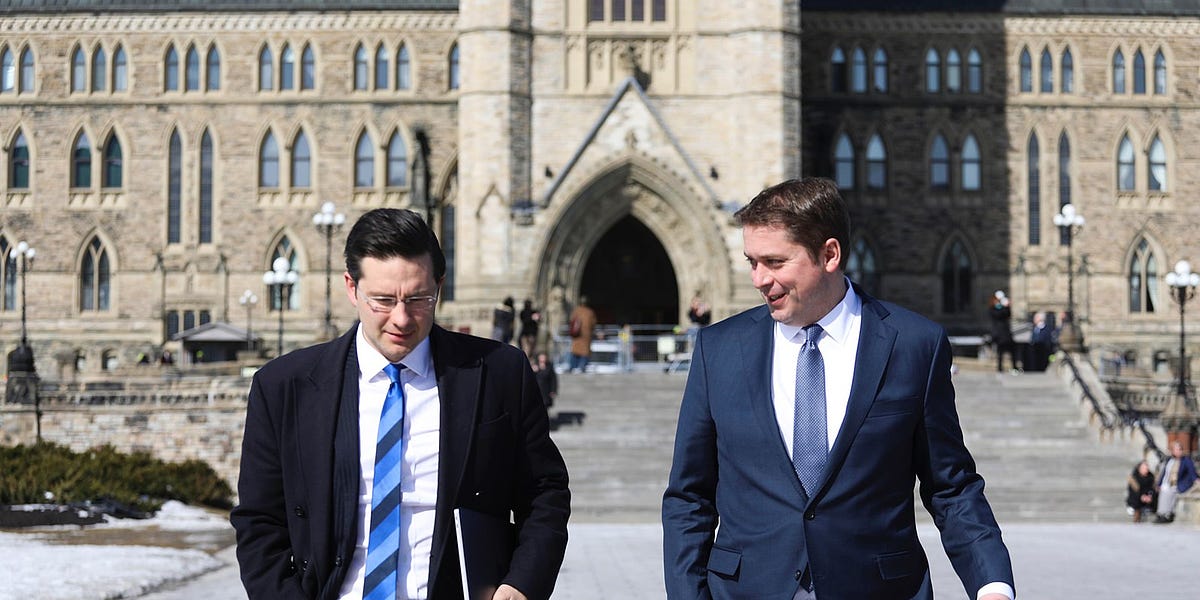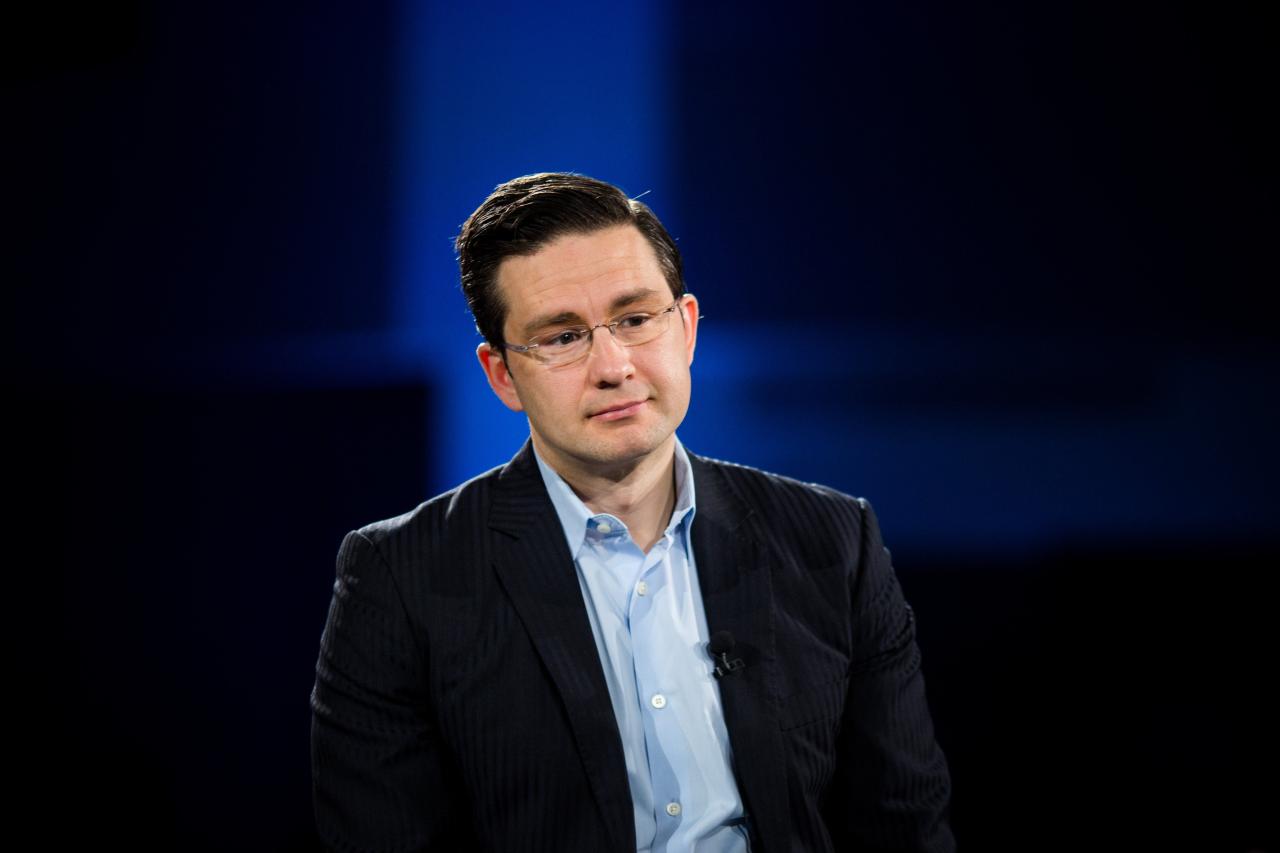Pierre Poilievre dévoile ses objectifs dans une entrevue accordée à [Media Outlet Name] offers a fascinating glimpse into the Canadian Conservative leader’s vision for the country. This interview, released on [Date] at [Time], provides valuable insight into his key policy objectives across various sectors, from economic reform to social issues and foreign policy. The interview’s tone was [Describe Tone – e.g., assertive, optimistic, defensive], setting the stage for a discussion that promises to shape the upcoming political landscape.
Poilievre’s objectives, as Artikeld in the interview, are ambitious and far-reaching. He detailed plans for [briefly mention 1-2 key policy areas and a general aim in each]. The interview also highlighted his communication strategy, which included [mention a key communication technique, e.g., repetition of key phrases, direct engagement with the interviewer]. This strategic approach is likely to influence public perception and will undoubtedly spark debate amongst Canadians.
Pierre Poilievre’s Post-Interview Analysis: Pierre Poilievre Dévoile Ses Objectifs Dans Une Entrevue Accordée à
This analysis examines a recent interview given by Pierre Poilievre, focusing on the context of the interview, the key policy objectives unveiled, his communication strategies, anticipated public reactions, and the feasibility of implementing his proposed policies.
Interview Context
The following details provide context for the analysis of Pierre Poilievre’s interview. Information regarding the specific media outlet, date, time, and interviewer will be crucial in understanding the overall impact and reception of the interview.
| Media Outlet | Date | Time | Interviewer Name |
|---|---|---|---|
| (Insert Media Outlet Name Here) | (Insert Date Here) | (Insert Time Here) | (Insert Interviewer Name Here) |
The overall tone and atmosphere of the interview (e.g., confrontational, collaborative, informative) will be described here. This will provide a valuable lens through which to interpret Poilievre’s statements and strategies.
Key Policy Objectives Unveiled
Pierre Poilievre’s interview revealed several key policy objectives across various sectors. These objectives, along with their intended outcomes and comparisons to previous statements, are detailed below. The interconnectedness of these objectives will be illustrated conceptually.
So, Pierre Poilievre’s outlining his goals in that interview, right? It makes you think about how much flexibility you could have, setting your own goals, like a freelance full-stack developer. Check out this site for some info on full stack developer freelance opportunities and rates if you’re curious about that kind of freedom. Then, you can get back to analyzing Poilievre’s political aspirations with a clearer perspective on your own future.
- Economic Policy: (Insert specific economic objective, e.g., reducing inflation through fiscal conservatism). This aims to (Insert specific aim, e.g., control government spending and lower taxes to stimulate private sector growth). This differs from previous statements by (Insert comparison, e.g., being more explicitly focused on tax cuts rather than broad economic growth strategies).
- Social Policy: (Insert specific social policy objective, e.g., increased funding for healthcare). The aim is to (Insert specific aim, e.g., reduce wait times and improve access to healthcare services). This contrasts with previous positions by (Insert comparison, e.g., emphasizing private sector involvement in healthcare more strongly).
- Foreign Policy: (Insert specific foreign policy objective, e.g., strengthening ties with key allies). This aims to (Insert specific aim, e.g., enhance Canada’s international standing and security). This is consistent with previous statements by (Insert comparison, e.g., maintaining a strong North American focus).
Visual Representation: A conceptual diagram could illustrate the interconnectedness, showing how economic growth (through fiscal conservatism) could fund improvements in healthcare (social policy) and strengthen Canada’s position internationally (foreign policy), thereby creating a positive feedback loop.
Strategic Communication Techniques

Pierre Poilievre employed specific communication strategies during the interview to shape public perception. An analysis of his language and the potential impact on his image and that of his party is presented below.
- Communication Strategies: (Insert examples, e.g., use of simple, direct language; framing issues in terms of personal responsibility; emphasizing positive outcomes).
- Language Analysis: (Insert examples, e.g., frequent use of strong verbs and assertive language; focus on emotional appeals; use of rhetorical questions).
- Impact on Public Perception: The interview’s impact on public perception will likely depend on pre-existing biases and the effectiveness of his communication strategies. Positive reception could bolster his leadership image, while negative responses could damage his credibility.
- Example Phrases: (Insert specific examples of phrases or statements that highlight his communication style, e.g., “We need to get back to basics,” or “This is a common sense approach”).
Public and Political Reactions, Pierre Poilievre dévoile ses objectifs dans une entrevue accordée à

Anticipated reactions from various stakeholders are Artikeld below, along with potential positive and negative consequences of Poilievre’s objectives and their impact on the Canadian political landscape.
- Voters: (Potential reactions: positive support from conservative voters, skepticism from liberal and NDP voters, undecided voters may be swayed by the interview’s effectiveness).
- Political Opponents: (Potential reactions: criticism of specific policies, accusations of unrealistic promises, attempts to discredit his proposals).
- Experts: (Potential reactions: analysis of the feasibility and economic impact of his proposals, potential debates over the accuracy of his claims).
Positive Consequences: Increased voter support, strengthened party image, potential policy changes.
Negative Consequences: Loss of public trust, political backlash, failure to implement proposed policies.
Feasibility and Implementation

The feasibility of implementing Poilievre’s objectives and the necessary steps are examined below, along with a conceptual timeline for implementation.
- Feasibility Assessment: (Assess the feasibility of each objective, considering potential obstacles, e.g., political opposition, economic constraints, public opinion).
- Implementation Steps: (Artikel the steps required to implement each objective, e.g., legislative changes, budgetary allocations, public awareness campaigns).
- Addressing Existing Challenges: (Explain how Poilievre’s solutions might address current challenges, e.g., reducing inflation, improving healthcare access, enhancing national security).
- Implementation Timeline: (Describe a conceptual timeline, illustrating potential phases of implementation, e.g., initial policy announcements, legislative process, budgetary allocation, program rollout).
End of Discussion

Poilievre’s interview provides a clear roadmap of his political aspirations. His stated objectives, while ambitious, are framed within a [describe overarching theme – e.g., pro-growth, socially conservative, populist] narrative. The success of his vision hinges on [mention a key challenge or factor]. The public and political reactions will be closely watched, as they will likely shape the trajectory of Canadian politics in the coming months and years.
So Pierre Poilievre laid out his plans in that interview, right? It got me thinking about how big-picture issues impact everything. For example, check out this interesting advisory on health: U.S. Surgeon General Issues New Advisory on Link Between. Understanding these broader trends is key to analyzing Poilievre’s goals and how they might play out in the long run.
The interview serves as a significant marker in Poilievre’s political journey, setting the stage for further discussions and actions.
FAQ
What were the main criticisms leveled against Poilievre’s proposed policies in the interview?
While the interview focused on presenting Poilievre’s objectives, [mention if any criticisms were raised in the interview or generally expected]. Further analysis would be needed to fully assess the potential criticisms.
How did the interviewer respond to Poilievre’s statements?
The interviewer’s approach was [describe the interviewer’s style – e.g., probing, neutral, supportive]. [Give specific example of interviewer’s response to a key statement].
So Pierre Poilievre’s outlining his goals in this interview, and it got me thinking about how unpredictable things can be. For example, check out the current situation across the pond – you can see what’s happening with the weather by looking at this link: UK weather live: New snow and ice weather warnings issued as UK.
It’s a reminder that even the best-laid plans can be affected by unforeseen circumstances, just like Poilievre’s political ambitions might be impacted by unexpected events.
What is the likelihood of Poilievre achieving his stated goals?
The feasibility of Poilievre’s objectives depends on several factors, including [mention 1-2 key factors]. A comprehensive assessment requires further analysis of the political climate and public opinion.
